Weight Male Colour depends on variety Scientific name Canis lupus familiaris Origin Belgium | Coat Long, short, rough Litter size 6-10 pups Life span 10 – 14 years Higher classification Dog | |
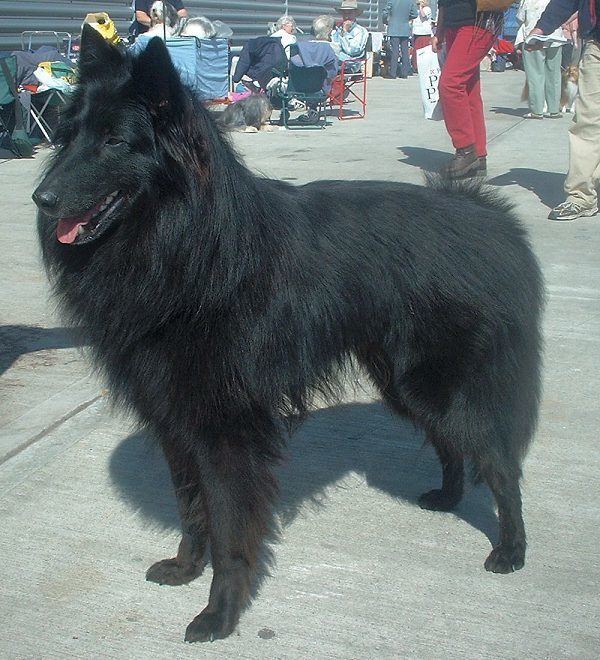 | ||
Other names Belgian SheepdogChien de Berger Belge FCI Group 1, Section 1 Sheepdogs #15 Height Male: 61 – 66 cm, Female: 56 – 61 cm Mass Male: 25 – 30 kg, Female: 20 – 25 kg Similar | ||
Belgian shepherd dog malinois dog breed
The Belgian Shepherd (also known as the Belgian Sheepdog or Chien de Berger Belge) is a breed of medium-to-large-sized herding dog. It originated in Belgium and is similar to other sheep herding dogs from that region, including the Dutch Shepherd, the German Shepherd, the Briard, and others. Four types have been identified by various registries as separate breeds or varieties: Groenendael, Laekenois, Tervuren, and Malinois.
Contents
- Belgian shepherd dog malinois dog breed
- Belgian shepherd dog groenendael dog breed
- Breed creation and recognition
- Breeds versus varieties controversy
- Appearance
- Structure
- Temperament
- Health
- Mortality
- Morbidity
- References
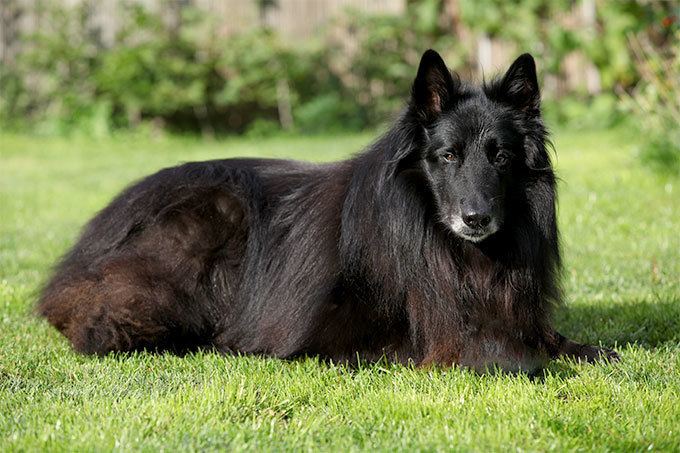
Belgian shepherd dog groenendael dog breed
Breed creation and recognition
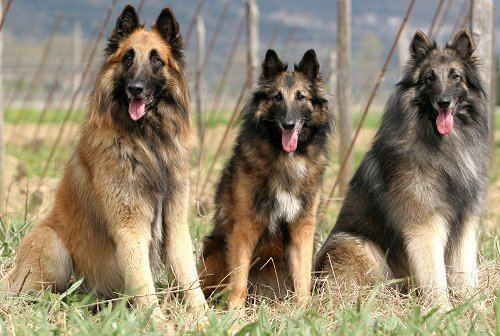
In the late 1800s, a group of concerned dog fanciers under the guidance of Professor A. Reul of the Cureghem Veterinary Medical School gathered foundation stock from the areas around Tervuren, Groenendael, Mechelen, and Laeken in Belgium. Official breed creation occurred around 1891, when the Club du Chien de Berger Belge (Belgian Shepherd Dog Club) was formed in Brussels. The first breed standard was written in 1892, but official recognition did not happen until 1901, when the Royal Saint-Hubert Society Stud Book began registering Belgian Shepherd Dogs.
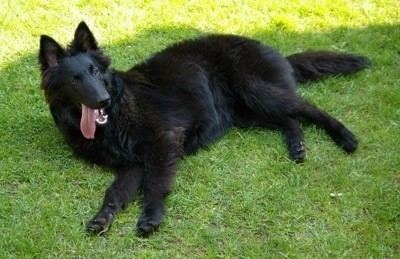
By 1910, fanciers managed to eliminate the most glaring faults and standardize type and temperament. There has been continued debate about acceptable colours and coat types. Structure, temperament and working ability have never been debated in regards to the standard.
Breeds versus varieties controversy
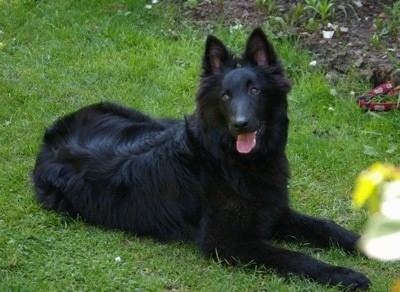
In Belgium (the country of origin) all four types are considered to be varieties of a single breed, differentiated by hair colour and texture. In some non-FCI countries and other regions, they are considered separate breeds. For instance, the American Kennel Club (AKC) recognizes only the Groenendael under the name "Belgian Sheepdog", but also recognizes the Tervuren and the Malinois as individual breeds (Belgian Tervuren and Belgian Malinois respectively). The Laekenois can be registered as part of the AKC Foundation Stock Service and should eventually be recognised fully by the AKC. In years gone past, the Groenendael and Tervuren were one breed with coat variations until the Belgian Sheepdog Club of America decided to petition the AKC to separate the two.
The New Zealand Kennel Club recognises all four as separate breeds. The Australian National Kennel Council, Canadian Kennel Club, Kennel Union of South Africa, United Kennel Club and the Kennel Club (UK) follow the FCI classification scheme and recognise all four as varieties of the same breed.
Appearance
The Belgian Shepherd is a medium-to-large dog. Breed standards expect specimens to be athletic, and balanced in appearance. It has a squarish build.
The four varieties of Belgian Shepherd are distinguished by their coats and colours:
Structure
All varieties share a similar underlying musculoskeletal structure. The Beligian's height from the ground to top of the withers is roughly equal to its length (not counting the tail). It thus has a square build in comparison to the German Shepherd, which has shorter hindlegs but is otherwise similar. All variants also share close cranial features, having a domed forehead, a long, square-cut muzzle and black noses, with their ears pointed and fully erect.
Temperament
Belgian Shepherd Dogs are described as highly intelligent, alert, sensitive to everything going on around them and form very strong relationship bonds. They are said to be loyal, intelligent, fun, highly trainable and well suited to family life. They should receive plenty of socializing as puppies and will benefit from regular activity and close interaction with people throughout their lifespan. Their herding heritage gives them a comparatively high energy level, and mental as well as physical exercise is necessary to keep a Belgian happy and healthy. In 2012, the North Wales Police force harnessed a Belgian Shepherd herding behavior, headbutting, in a novel approach to subduing criminals. The dogs are muzzled to prevent bites, and trained to forcefully headbutt targets at the midriff on command, knocking them off balance.
Belgian Shepherds do well in sports such as obedience training and dog agility. They are used as assistance and search and rescue dogs, as well as police, military and narcotics dogs.
Health
Although a generally healthy variety of dog, Belgian Shepherds can have a susceptibility to hip dysplasia, epilepsy, gastric problems (including bloats and torsions), and some eye and skin problems. Notable health problems prevalent to the Malinois include cataracts, epilepsy, thyroid disease, progressive retinal atrophy, hip dysplasia, and pannus, although these problems have been minimised through selective breeding.
There have been few health surveys of the individual Belgian Shepherd varieties. The UK Kennel Club conducted a 2004 health survey of all Belgian Shepherd varieties combined. The Belgian Sheepdog (=Groenendael) Club of America Health Committee has a health registry questionnaire, but it is not clear whether or when results will be reported. The American Belgian Tervuren Club conducted health surveys in 1998 and 2003. Only the 2003 report included longevity information.
Mortality
Median longevity of Belgian Shepherds (all varieties combined) in the 2004 UK survey, was 12.5 years, which is on the high side, both for purebred dogs in general and for breeds similar in size. The longest-lived of 113 deceased Belgians in the UK survey was 18.2 years. Leading causes of death were cancer (23%), cerebral vascular, i.e., stroke (13%), and old age (13%).
Average longevity of Belgian Tervurens in the 2003 American Belgian Tervuren Club survey was lower, at 10.6 years, than in the UK survey. The difference in surveys does not necessarily mean Belgian Tervurens live shorter lives than other varieties of Belgian Shepherds. Breed longevities in USA/Canada surveys are usually shorter than those in UK surveys. Leading causes of death in the 2003 American Belgian Tervuren Club survey were cancer (35%), old age (23%), and organ failure (heart, kidney, liver) (13%).
Morbidity
Belgian Shepherds are afflicted with the most common dog health issues (reproductive, musculoskeletal, and dermatological) at rates similar to breeds in general. They differ most notably from other breeds in the high incidence of seizures and/or epilepsy. In the UK survey of Belgian Shepherds and both the 1998 and 2003 ABTC survey of Belgian Tervurens, about nine per cent of dogs had seizures or epilepsy. Other studies have reported rates of epilepsy in Belgian Tervurens as high as seventeen per cent, or about one in six dogs. For comparison, the incidence of epilepsy/seizures in the general dog population is estimated at between 0.5 per cent and 5.7 per cent. See Epilepsy in animals for more information on symptoms and treatments.
